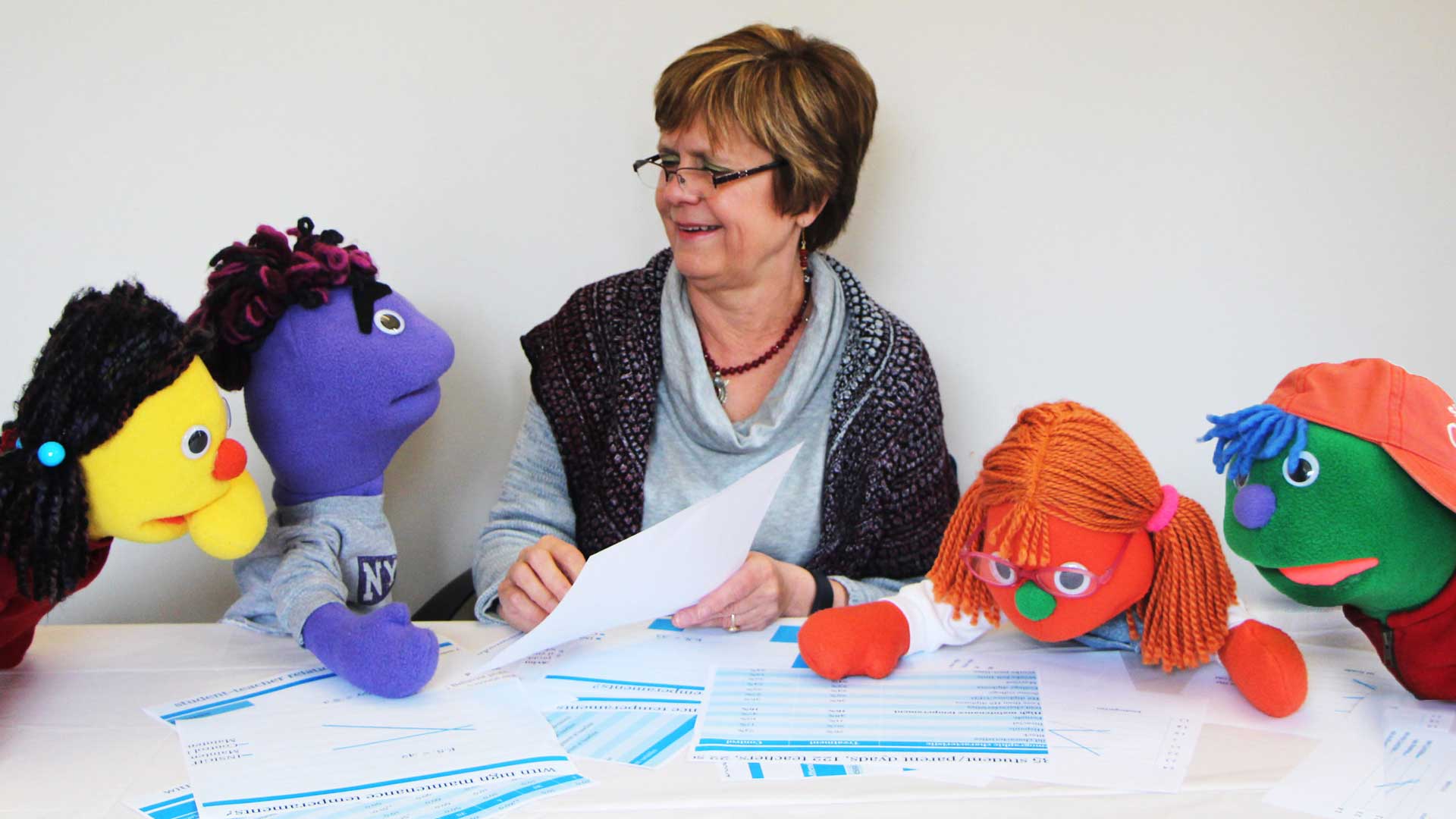Puppets are magical. For centuries, puppeteers have transformed scraps of cloth, wood, feathers, and paper into puppets that mesmerize children (and many adults, too). As talented and versatile character actors, puppets can be funny in one scene and the victim of tragedy in another.
Although puppets can be entertaining, they also have therapeutic roles. A puppet can be a friend who listens attentively to the worries or frustrations of a child. Puppets also encourage children to use their imagination and try out different scenarios without fear of retaliation or punishment. They allow children to distance themselves from intense or negative feelings. Children can project their thoughts and emotions on a puppet without penalty: “I didn’t say that! The puppet did.”
Children often react to a puppet’s dilemmas based on their own temperament. A famous photographer, Alfred Eisenstaedt, captures how differently children respond to a puppet show when a cruel dragon is slain. Although some children cheer with delight, others look frightened. The differences in their reactions can be credited to their temperament which is formally defined as the “consistent behavioral reactions a child demonstrates across a variety of settings and situations, particularly when there is stress or change. Temperament also is a lens through which a child views the world.” Some people refer to temperament as personality.
Children are born with a particular temperament. Adults are advantaged when they recognize a child’s temperament so that they can adapt their parenting and classroom management strategies to match a child’s unique temperament. There are multiple ways that people can learn about the temperaments of their children or students. One of the ways we explain children’s temperaments in INSIGHTS is through puppets.
Although puppets have a long and distinguished history in theatre and in play therapy, few puppets have actively participated in research. The INSIGHTS puppets are an exception. Although most puppets trace their origin to the imagination of a puppeteer, the INSIGHTS puppets have their genesis in data that popped out of my computer after I asked parents and teachers to describe children’s behaviors. As I looked at my computer screen, I thought about the children I have professionally cared for and others that have been in my personal life. The variation in their emotional responses, attention, and behavior helped me create characters who matched the different sets of numbers. What resulted were four characters with distinctly different temperaments who further morphed into puppets: Coretta the Cautious is shy, while her opposite, Fredrico the Friendly is social and eager to try just about anything; Gregory the Grumpy is high maintenance while his mirror image, Hilary the Hard Worker is industrious.
The INSIGHTS puppets joined us in our research in kindergarten to 2nd-grade classrooms. Of course, the children loved the puppets, but I was skeptical about whether young children could discriminate among the different temperaments. One of my colleagues, Claire Hatamiya, Ph.D., set out to answer that question. She interviewed nearly 300 children who were in our randomized clinical trials that tested whether INSIGHTS works (Spoiler alert: INSIGHTS does work!).
The first question Dr. Hatamiya asked the children was “If you could pick one puppet—who is most like you, which one would you choose?” Then she asked, “Why do you think that you are like (name of selected puppet)?” Their answers taught us a lot about how young children perceive themselves. Here’s are a few of their responses:
- One of the children selected Hilary the Hard Worker, “Because she did her work at home and school and I work hard at school. I like to read and read.”
- Another picked Fredrico the Friendly, “Because Fredrico is very friendly and I am very friendly. For Fredrico, family and friends are important — to him and me.”
- A child who picked Coretta the Cautious said, “Because sometimes when I go to birthdays and there are people I don’t know, I just get shy and just sit down.”
- Some children even selected Gregory Grumpy as most like them. One of them said, “Because sometimes it’s hard to do stuff like concentrate on my work and I get mad” and another said, “Because sometimes I am really angry, and I’m really honest with people, and when I don’t want to do something, I tell people.”
The INSIGHTS puppets continue to work with me in schools and in my private practice. I remain endlessly fascinated by how puppets help children navigate their own lives. For example, during a recent session with a little boy who was having behavioral problems at home and in school, Michael looked rather pensively at the puppets and then asked me: “Is Gregory working on being good?” I responded that Gregory had improved so much recently that I took him to schools to talk about his temperament and how he is working on improving his behavior. Immediately, Michael looked relieved and said to me, “Well, I’m like Gregory then. That’s why I like him.” Part of the appeal of the INSIGHTS puppets is that each has strengths and challenges, just like all of us. Clearly, Michael appreciated a puppet friend who understood his challenges.
Responsive parents and teachers recognize that everyone has challenges associated with their temperament. Being responsive to a child’s temperament, however, does not mean being permissive. Children need adults who can teach them to self-regulate. Our next blog (to be posted ad whim) will address how adult responsiveness and discipline work together to enhance children’s adjustment and resiliency. In the meantime, your comments questions and suggestions are, as always, greatly appreciated!
Intrigued by our puppets? Here’s a brief video that shows them in action.
Hatamiya, Claire N. (2011) Using Puppets: An Investigation of Children’s Self-Reports of their Temperament, New York University, New York, 2011. ProQuest Dissertations Publishing, 2011. 3454473.

